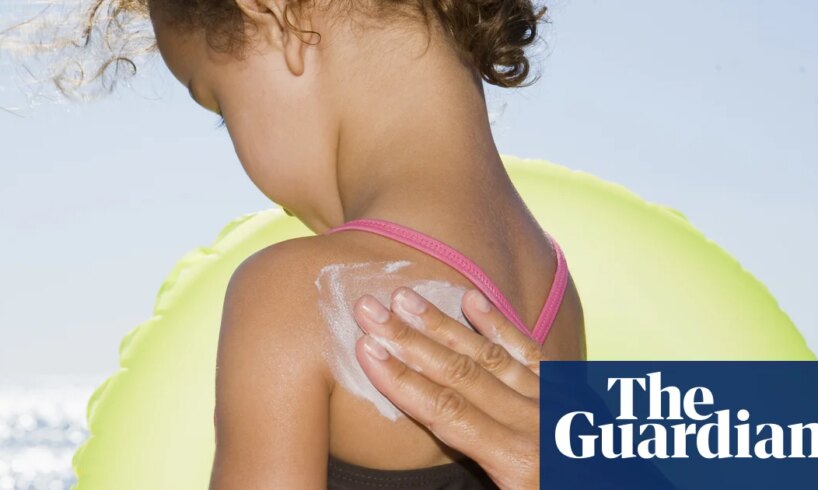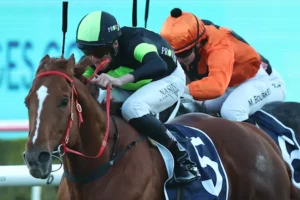
Australian consumers are paying a premium for “mineral” sunscreens that contain almost identical chemicals to cheaper varieties, new testing has revealed.
The University of New South Wales’ school of chemistry tested 10 sunscreens, including Invisible Zinc children’s sunscreen and a Naked Sundays skin tint that retails for $58 – both marketed as mineral sunscreens.
Mineral sunscreens, which often contain zinc oxide, are usually marketed as more “natural” and gentler on the skin, and are sometimes described as reflecting UV.
They also tend to be much more expensive than generic supermarket or pharmacy products.
Sign up: AU Breaking News email
The study found that while all 10 products exceeded their sun protection factor (SPF) claims, some of the protection provided by the Invisible Zinc and Naked Sundays products actually came from chemicals not identified on the bottle.
The researchers found a range of products contain chemical filters which aren’t listed as active ingredients, with prices for some mineral sunscreens as high as $82 for a 50ml bottle.
“If a sunscreen is giving the illusion that it only contains so-called mineral components … it’s very likely it contains almost identical stuff as other sunscreens and that’s what makes them work so well,” UNSW Prof Jon Beves said.
Brands ‘exploiting a loophole’ to market sunscreen
Sunscreens typically work by creating a barrier between the skin and the sun’s rays by absorbing UV radiation.
The UNSW study found that while zinc oxide reflects UV, it acts similarly to “chemical” filters, via absorption.
The researchers also found that some brands include other UV-absorbing chemicals in mineral sunscreens, without fully disclosing this to consumers.
Most sunscreens in Australia are registered with the Therapeutic Goods Administration (TGA), which requires the submission of SPF test results and a list of ingredients.
But some do not need TGA registration, because brands describe them as cosmetic products, meaning they are subject to fewer regulations and do not need to disclose any ingredients.
Unregulated chemicals in a third of ‘mineral’ sunscreens
A broader review by the UNSW researchers, examining 143 sunscreens registered with the TGA that list only mineral filters such as zinc oxide as active ingredients, found more than a third also contain unregulated chemical filters.
Nearly 25% of the products contain butyloctyl salicylate and ethylhexyl methoxycrylene, chemical filters that protect from UV radiation but do not have to be listed as “active” ingredients with the TGA because they aren’t regulated.
The UNSW’s Dr Anna Wang said these chemicals are used to make products feel nicer on the skin, but they also absorb UV in a similar manner to the common sunscreen ingredients ethylhexyl salicylate and octocrylene. Both ingredients are regulated by the TGA, making them subject to safety reviews.
New tests reveal ‘hidden’ chemicals boosting SPF
To test the sunscreens, the UNSW scientists spread films of each product on quartz, a type of glass that does not absorb UV on its own.
They used a device that could pass UV light through each sunscreen’s film to see how much light was absorbed and reflected, and worked out the patterns that zinc oxide showed compared with “chemical” filters.
In the case of the Invisible Zinc Junior Mineral Sunscreen SPF50, the UNSW testing found zinc oxide wasn’t the only ingredient providing sun protection, despite the company advertising otherwise.
On the TGA register, its manufacturer, iNova Pharmaceuticals claims, zinc oxide is the product’s only “active” ingredient. It lists butylocyl salicylate and ethylhexyl methoxycrylene as “other” ingredients.
The UNSW research found there was “no doubt” these other chemicals contributed to the sunscreen’s SPF performance.
skip past newsletter promotion
Sign up to Breaking News Australia
Get the most important news as it breaks
Privacy Notice: Newsletters may contain information about charities, online ads, and content funded by outside parties. If you do not have an account, we will create a guest account for you on theguardian.com to send you this newsletter. You can complete full registration at any time. For more information about how we use your data see our Privacy Policy. We use Google reCaptcha to protect our website and the Google Privacy Policy and Terms of Service apply.
after newsletter promotion
On its website, Invisible Zinc claims the sunscreen contains “no chemical UV filters”.
An iNova spokesperson said the assertion that the chemicals were hidden was “categorically false”, because they were disclosed in the product’s TGA listing.
“It is true that both [butyloctyl salicylate and ethylhexyl methoxycrylene] absorb UV, however, that is not their primary function in our formulation,” they said.
“We stand by the claims associated with Invisible Zinc Junior Mineral Sunscreen, particularly that micronized zinc oxide is the only active ingredient.”
Naked Sundays did not respond to Guardian Australia’s requests for comment.
But the UNSW researchers said its BeautyScreen SPF50 Peptide Foundation Tint returned similar results to those of Invisible Zinc’s.
On its website, the product lists zinc oxide 12% as its only active ingredient. It names butyloctyl salicylate as an “inactive” ingredient, but the UNSW researchers said this chemical was “definitely boosting the SPF” of the product.
Because it is considered a cosmetic the product does not need to be registered with the TGA or list its ingredients on the regulator’s website.
Sunscreen industry under a microscope
The UNSW research was conducted over several months after the consumer advocacy group Choice prompted a scandal in June with its own investigation into popular sunscreen brands’ SPF claims.
The industry has previously run on an honour system: sunscreen brands “self-certify” they have tested SPF claims, and the TGA does not usually do its own testing.
But after the Choice investigation, the TGA recalled a range of sunscreens and is considering changes to the way it regulates the industry, including how products should be tested.
The UNSW researchers said their calculations were a “best-case scenario” because their testing could not account for the potential interaction between the sunscreens and skin, especially if it were absorbed or washed off.
The TGA has said, however, that variability between people presents issues with testing sunscreen on human skin. The regulator is considering a shift to in vitro SPF testing, away from the accepted method of using human volunteers.
The TGA has been contacted for comment.
Quick GuideContact Guardian AustraliaShow
If you have something to share about this story, you can contact the Guardian Australia news teams using one of the following methods.
Secure Messaging in the Guardian app
The Guardian app has a tool to send tips about stories. Messages are end to end encrypted and concealed within the routine activity that every Guardian mobile app performs. This prevents an observer from knowing that you are communicating with us at all, let alone what is being said.
If you don’t already have the Guardian app, download it (iOS/Android) and go to the menu. Select ‘Secure Messaging’.
– If you don’t need strong security you can write to a Guardian Australia journalist using the details here. Click on a person to see their details.
– For end to end encrypted email you can create a free Protonmail account and email gaus.contact@protonmail.com.
Messaging apps
You can also use the encrypted messaging apps Signal or WhatsApp to message us at +61 490 758 250.
SecureDrop and other secure methods
If you can safely use the tor network without being observed or monitored you can send messages and documents to the Guardian via our SecureDrop platform.
Finally, our guide at theguardian.com/tips lists several ways to contact us securely, and discusses the pros and cons of each.
Illustration: Guardian Design / Rich Cousins
Thank you for your feedback.





